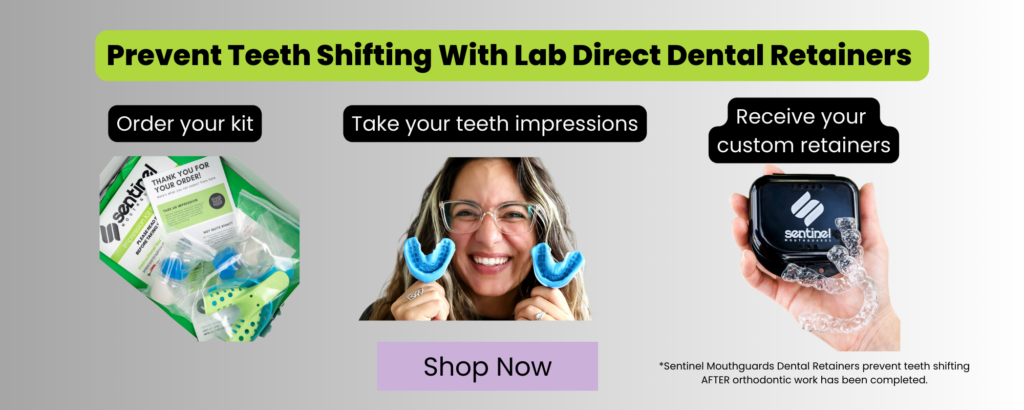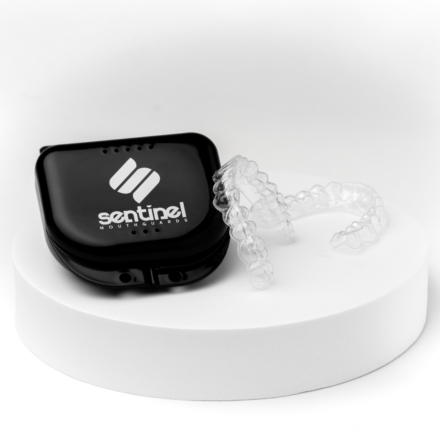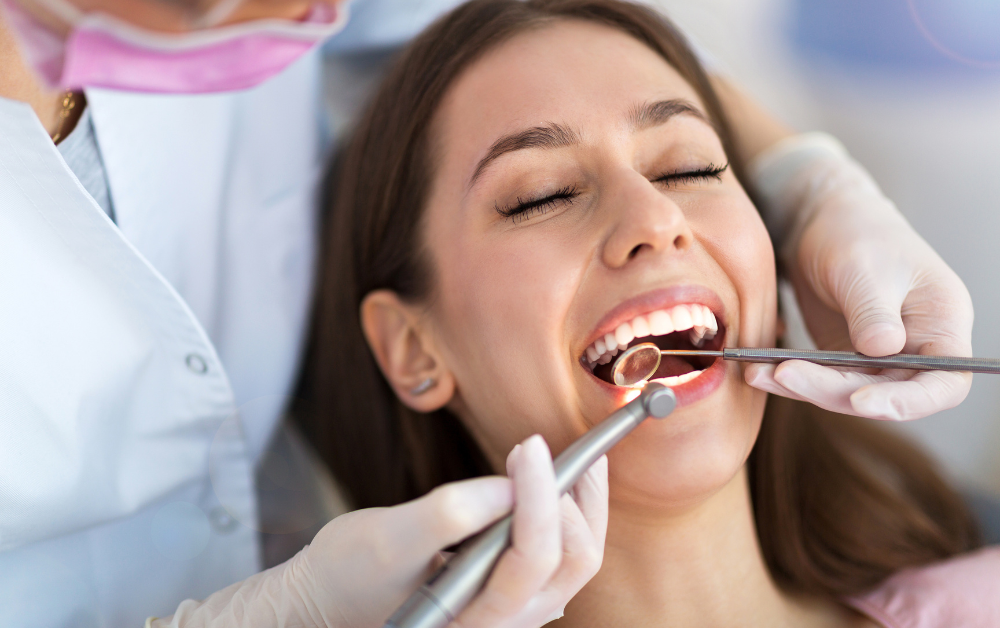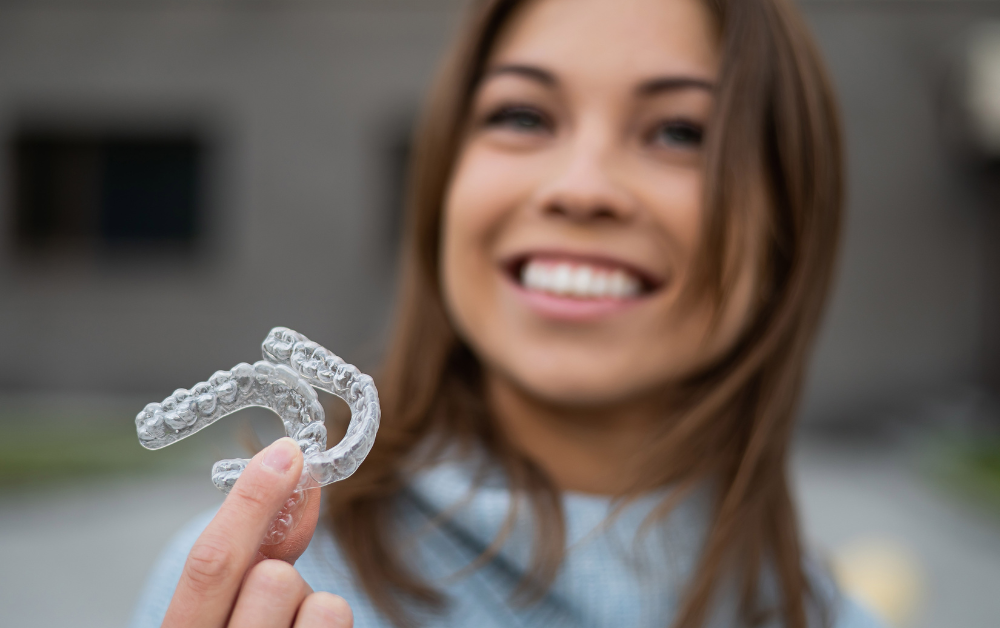To Shift or Not to Shift: The Efficacy of Old Retainers in Moving Teeth Back
Retainers, those often-underappreciated devices, play a crucial role in maintaining the beautiful smiles crafted by braces and other orthodontic treatments. However, life happens, and sometimes consistent retainer use becomes a challenge. Many wonder if slipping on those old retainers tucked away in a drawer can reverse the clock on teeth misalignment.
In this exploration, we delve into the popular question circulating the internet: ‘Can a retainer move teeth back?’ Let’s uncover the truths, dispel the myths, and find out if those neglected retainers hold the potential to reclaim the straight smiles of previous times.

The Importance of Consistent Retainer Use
In the world of orthodontics, consistency is key, and retainers serve as silent guardians to the meticulously aligned smiles achieved through braces or other orthodontic interventions. These devices work to prevent the gradual shift of teeth that naturally occurs over time. The importance of consistent retainer use cannot be overstated.
By wearing them as prescribed by orthodontic professionals, individuals help secure the gains made during their orthodontic journeys. Failure to adhere to this post-treatment regimen can result in the subtle but persistent movement of teeth, leading to potential misalignment.
Can Old Retainers Move Teeth Back?
While it’s a tempting thought, the reality is a bit more nuanced. Consistency in retainer use matters significantly, and relying on neglected retainers from the past may have limitations. In this section, we will delve into the factors contributing to teeth shifting over time, explore the potential of using old retainers for realignment, and shed light on the crucial role that regular use plays in maintaining the desired tooth alignment achieved through orthodontic treatment.
Risks and Considerations
While the prospect of using old retainers to guide teeth back into alignment may seem like an appealing option, it’s essential to acknowledge the potential risks and considerations associated with this approach. Attempting to self-adjust teeth with old retainers may lead to discomfort or even pain, as these appliances may not provide the necessary support or precision required for effective realignment.
Moreover, the overall impact on oral health should be carefully weighed, as improper attempts at correction could inadvertently result in issues such as bite problems or jaw discomfort.
Seeking an affordable and reliable solution for replacement retainers?
Consider Sentinel Mouthguards, a trusted option that focuses on maintaining teeth in their current position. While we do not straighten teeth, Sentinel Mouthguards offer custom-fitted retainers as a practical and cost-effective alternative.
Crafted with precision and designed for comfort, these retainers serve as a reliable choice for those looking to preserve their orthodontic results without breaking the bank. Explore the convenience of affordable replacement retainers with Sentinel Mouthguards, prioritizing the stability of your smile in a straightforward and accessible manner.
-
Product on sale
 Clear Dental Retainers – Perfect Replacement Aligners$129.00 – $179.00
Clear Dental Retainers – Perfect Replacement Aligners$129.00 – $179.00
Professional Advice

When faced with the desire to correct teeth misalignment, seeking professional advice is paramount. Orthodontists, with their expertise and understanding of dental dynamics, play a crucial role in assessing the feasibility of using old retainers for realignment. Orthodontists can provide personalized insights into the unique characteristics of one’s teeth and offer guidance on whether old retainers may be a viable option.
Remember, a tailored approach based on professional advice ensures a safer and more reliable path to a beautifully aligned smile.
Preventive Measures
As we navigate the terrain of orthodontic care, it’s crucial to not only address current concerns but also implement preventive measures for lasting results. In this section, we will delve into practical tips aimed at maintaining straight teeth post-orthodontic treatment.
From adopting good oral hygiene practices to understanding the importance of regular check-ups with orthodontic professionals, these preventive measures can contribute significantly to the longevity of a beautifully aligned smile.
Additionally, we’ll provide advice on proper retainer care and highlight the significance of timely replacement. By incorporating these preventive measures into one’s oral care routine, individuals can take proactive steps to preserve the results achieved through orthodontic interventions and minimize the likelihood of teeth misalignment in the future.
Real-Life Experiences
As we explore the realm of teeth realignment and the potential use of old retainers, let’s look into real-life experiences shared by individuals who have faced similar challenges. In this section, we’ll feature personal stories and testimonials from those who attempted to use old retainers for teeth correction.
These narratives will offer a glimpse into the motivations, struggles, and outcomes of individuals seeking to reclaim their once-perfect smiles. By sharing these real-life experiences, we aim to provide a more relatable perspective on the complexities of maintaining orthodontic results and the lessons learned along the way. Reddit question:
Should I still wear my retainer that no longer fits?
So i got my braces removed just two years ago. I stopped using my retainer for about half a year now…
recently ive noticed some minor shifting of my teeth…in a panic, i tried to use my old retainer but it would not fit properly and was very uncomfortable…
question: should i keep using this old retainer in attempt to halt the shifting? Or should i just let the shifting happen? Not planning to spend money on any more treatment, so the above are my options.
Comments:
“Dentist here.
First see your orthodontist. The orthodontist has seen this before! She/he will know what will be best for you. Take your retainer with you when you go. Don’t be embarrassed.
If you are too embarrassed to see your orthodontist, get used to crooked teeth, because they will revert. Six months isn’t that long, but hurry!”
“Absolutely not. I saw a video recently of a girl who did this and broke #8 (upper front tooth).”
“Don’t wear it. Get braces again. What happens over time with ill fitting old retainers is… bone loss around the teeth from stress/trauma of tooth movement … then teeth get loose… don’t do it… yes braces are expensive, but so are dentures (in the long run with realignments/implants/etc). Good luck!”
How long does it take for teeth to shift if I stop wearing my retainer?
The rate at which teeth shift after discontinuing retainer use can vary among individuals and depends on several factors, including the individual’s unique dental anatomy, the extent of the initial orthodontic correction, and how long the retainer was worn consistently. However, in many cases, noticeable changes can occur within a few weeks to months.
Teeth have a natural tendency to shift over time due to factors like genetics, aging, and changes in oral health. When a retainer is not worn consistently as prescribed by the orthodontist, the risk of relapse increases. Initial shifts may occur relatively quickly, but the full extent of changes may take longer to become noticeable.
It’s essential to recognize that the speed and degree of teeth movement can vary. To maintain the results achieved through orthodontic treatment, it’s crucial to follow the orthodontist’s recommendations for retainer use and attend regular follow-up appointments to monitor the stability of the teeth alignment. If you have concerns about changes in your teeth alignment, consulting with your orthodontist promptly is advisable to address any issues and explore appropriate solutions.
Are there any home remedies to straighten teeth without professional intervention?
While there are various DIY trends and home remedies circulating on the internet, it’s crucial to approach any attempts to straighten teeth at home with caution. Orthodontic treatment is a complex process that requires professional expertise to ensure safe and effective results.
Attempting to straighten teeth at home without professional intervention can lead to adverse consequences and may not yield the desired outcomes. Here are some reasons why relying on home remedies for teeth straightening is not recommended:
- Lack of Professional Guidance: Orthodontic treatment requires a personalized approach based on an individual’s unique dental anatomy. Without professional guidance, there is a risk of causing harm or exacerbating existing issues.
- Unpredictable Results: Home remedies often lack the precision and predictability of orthodontic appliances. DIY approaches may lead to uneven tooth movement, bite problems, or other complications.
- Safety Concerns: Attempting to use household items or makeshift devices for teeth straightening can pose safety risks. Improperly applied pressure or force on teeth can damage the enamel, roots, or surrounding tissues.
- Potential for Increased Costs: Incorrect attempts at home may lead to complications that require professional intervention to correct. This could result in additional expenses beyond what would have been incurred with proper orthodontic care from the beginning.
- Risk of Permanently Damaging Teeth: DIY methods may cause irreversible damage to teeth, gums, or the jaw, leading to long-term oral health issues.
For safe and effective teeth straightening, it’s highly recommended to consult with a qualified orthodontic professional. They can assess your specific situation, provide appropriate treatment options, and guide you through a well-monitored and regulated process to achieve the desired results.
What are the risks of using old retainers for teeth realignment at home?
Attempting to use old retainers for teeth realignment at home carries several risks, and it’s important to be aware of the potential consequences. Here are some of the risks associated with using old retainers without professional guidance:
- Ineffectiveness: Old retainers may have lost their original shape or effectiveness over time. Attempting to use them for teeth realignment may prove ineffective in achieving the desired results.
- Misalignment and Bite Issues: Improperly fitting or worn-out retainers may lead to uneven tooth movement, causing misalignment or bite issues. This can result in discomfort, difficulties with chewing, and potential long-term oral health problems.
- Discomfort and Pain: Using old retainers for realignment without professional oversight can cause discomfort or pain. Applying pressure to teeth without proper monitoring may lead to unnecessary dental issues.
- Exacerbation of Existing Problems: If there are underlying dental issues or changes in the oral structure since the original orthodontic treatment, attempting realignment with old retainers may exacerbate problems rather than solving them.
- Risk of Further Damage: The do-it-yourself approach may involve using excessive force or attempting adjustments that can lead to damage to the teeth, gums, or surrounding structures.
- Increased Treatment Costs: If attempting to use old retainers results in complications, individuals may eventually need professional intervention. This can lead to increased treatment costs compared to seeking professional advice from the outset.
- Compromised Oral Health: Incorrect attempts at teeth realignment with old retainers may compromise overall oral health, leading to issues such as gum recession, root damage, or other long-term problems.
To minimize these risks and ensure safe and effective teeth realignment, it’s highly advisable to consult with an orthodontic professional. Orthodontists can assess your specific situation, recommend appropriate solutions, and guide you through a well-monitored treatment plan tailored to your unique dental needs.
Is it possible to prevent teeth shifting without wearing a retainer?
Preventing teeth shifting without wearing a retainer can be challenging, as the natural tendency of teeth is to shift over time. Retainers are specifically designed to maintain the results achieved through orthodontic treatment and help prevent teeth from reverting to their original positions. However, while it may be challenging to completely prevent any shifting, there are some practices and habits that individuals can adopt to minimize the risk:
- Good Oral Hygiene: Maintaining excellent oral hygiene practices, including regular brushing and flossing, can contribute to overall oral health. Healthy gums and teeth are less susceptible to issues that could lead to misalignment.
- Healthy Diet: Consuming a balanced diet rich in nutrients contributes to strong teeth and bones. Adequate calcium and vitamin D intake can support dental health.
- Avoid Habits That Strain Teeth: Refrain from habits that place excessive force on the teeth, such as nail biting, chewing on hard objects, or using teeth as tools. These habits can contribute to shifts in tooth position.
- Regular Dental Check-ups: Routine visits to the dentist allow for the early detection of any changes in tooth alignment. Regular professional examinations can help address issues before they become more significant.
- Posture Awareness: Proper posture, including the alignment of the jaw, can influence the way teeth come together. Being mindful of posture can contribute to maintaining a balanced bite.
While these practices can help support overall oral health and minimize the risk of significant teeth shifting, it’s important to note that individual factors, genetics, and aging can still influence tooth movement. If you have concerns about the alignment of your teeth or notice changes, consulting with a dental professional is recommended for personalized advice and guidance tailored to your unique situation.
Conclusion
In conclusion, the question of teeth realignment and the use of old retainers unveils a landscape filled with both curiosity and caution. While the allure of achieving a perfectly aligned smile using neglected retainers may be tempting, the complexities involved demand careful consideration.
Consistency in retainer use remains paramount for preserving orthodontic results, and the risks associated with attempting self-adjustment at home underscore the importance of professional guidance. Teeth have a natural tendency to shift over time, and preventive measures, including good oral hygiene and lifestyle habits, play a role in supporting overall dental health. However, the key takeaway is the significance of seeking advice from orthodontic professionals.
Their expertise provides personalized insights, ensuring a safer and more effective path to achieving and maintaining a confident and well-aligned smile. In the pursuit of dental health and aesthetic harmony, informed decisions and collaboration with dental experts stand as the cornerstones for a lasting and satisfying outcome.
Would you like to learn more about Sentinel Mouthguards products and services?
Visit our help center today!

